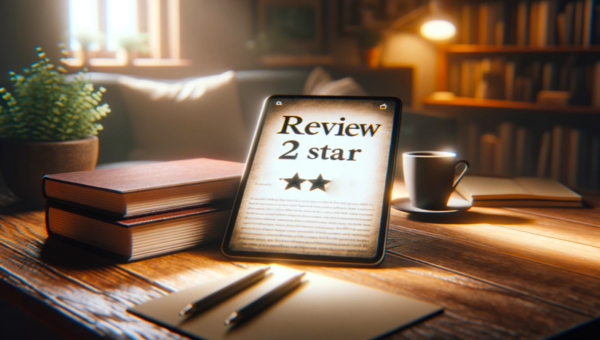
Marketing your book can feel like trying to stand out in a sea of penguins—everyone looks the same until they start doing something unique. And in today’s publishing world, the sea is enormous. On average, over 4,500 new titles are published every day in the U.S. alone. That’s right—by the time you finish reading this paragraph, dozens more books have hit the market, each vying for attention. So, what’s an author to do?
While you’ve mastered the art of writing, getting readers to actually discover your book is a different beast. Enter paid advertising: the magic wand authors often overlook. Sure, organic methods like social media and blogging can help (when the algorithm gods are kind), but here’s a fun stat: businesses see a 200% return on investment from paid ads. Not bad for something many of us avoid like it’s a spam email.
In this article, we’ll explore how you, as an author, can tap into the power of paid book marketing ads to actually get seen—because after all, what good is a great story if no one knows it exists?
Why Paid Advertising is Essential for Authors
In today’s competitive publishing landscape, simply writing a great book isn’t enough. The reality is, no matter how brilliant your work, it won’t sell if no one knows it exists. This is where paid advertising comes in—a powerful tool that can significantly enhance your book’s visibility and reach. Unlike organic methods, which often require time and a bit of luck, paid ads give you the ability to target specific audiences and achieve immediate results.
Paid advertising is essential because it allows you to cut through the noise and place your book directly in front of potential readers. Whether you’re a debut author or an established writer, paid ads can be tailored to reach the exact audience you’re targeting, based on factors like age, interests, and reading habits. This level of precision ensures that your marketing efforts aren’t just broad strokes, but are instead focused on the people who are most likely to buy your book, thereby maximizing book sales.
Additionally, paid ads can complement and amplify your organic marketing strategies. For instance, while your social media posts may reach a certain number of followers, a well-placed paid ad can extend that reach to a much larger audience. This combination of organic and paid efforts creates a more robust marketing strategy, increasing the chances of your book being seen, purchased, and enjoyed by a wider readership.
Your Publishing Journey Awaits – Start NowUltimately, investing in paid advertising is an investment in your book’s success. It provides the exposure needed to boost sales, build your author brand, and, most importantly, connect with the readers who will love your book.
Understanding Different Paid Book Marketing Ads
When it comes to paid advertising for your book, the options can seem overwhelming. Each platform offers unique advantages, and understanding how to leverage them effectively is key to maximizing your book’s visibility and sales. Here’s a breakdown of some of the most popular paid advertising avenues available to authors.
Sponsored Ads on Social Media Platforms
Social media platforms like Facebook, Instagram, and Twitter are among the most powerful tools for book marketing. These platforms allow you to create highly targeted ads based on user demographics, interests, and behaviors. Facebook and Instagram, in particular, offer robust ad platforms where you can run ads that appear in users’ feeds, stories, or even within the Marketplace. The key to success with social media ads is precise targeting and compelling visuals that grab attention. For example, a well-designed Facebook ad featuring your book cover, a catchy tagline, and a call to action can drive significant traffic to your Amazon page or author website.
Amazon Ads
Amazon is not just a marketplace; it’s also one of the most effective places to advertise your book. Amazon Marketing Services (AMS) allows you to promote your book directly to shoppers who are already browsing for books. With options like Sponsored Products, Sponsored Brands, and Lockscreen Ads, you can tailor your campaigns to reach readers based on their search terms, browsing history, and even their interests. Optimizing your Amazon ads involves carefully selecting keywords that match your book’s genre and themes, setting a competitive bid, and monitoring your campaigns closely to adjust as needed.
Book Promotion Sites
In addition to social media and Amazon, specialized book promotion sites can be a powerful tool in your advertising arsenal. Sites like BookBub, Written Word Media, and Freebooksy are among the best book promotion sites designed specifically for book promotions and can help you reach a large audience of avid readers. These sites offer various ad packages, allowing you to choose the level of exposure that fits your budget. The key is selecting the right promotion site based on your book’s genre, price point, and target audience. For instance, a BookBub Featured Deal can lead to a significant spike in sales, particularly for heavily discounted or free books.
By understanding the strengths of each advertising option and aligning them with your book marketing goals, you can create a strategic ad campaign that not only boosts visibility but also drives meaningful results.
Book Promotion Services: Finding the Best Fit for Your Book
Navigating the world of book promotion services can be daunting, especially with so many options available. These services are designed to help authors boost their book’s visibility, reach new readers, and ultimately increase sales. However, not all book promotion services are created equal, and finding the right fit for your book is crucial to getting the best return on your investment.
Popular Book Promotion Services
There are several well-known book promotion services that cater to different needs and budgets. Platforms like Written Word Media (which runs sites like Freebooksy and Bargain Booksy) are some of the most effective free book promotion sites available to authors. Platforms like Written Word Media (which runs sites like Freebooksy and Bargain Booksy), BookBub, and eReader News Today are among the most popular choices for authors. Each of these services offers different types of promotions, from free book features to discounted deals, targeting a wide range of readers.
For example, Written Word Media’s Freebooksy allows you to promote free and discounted books to a large audience, which can be particularly effective for driving downloads and reviews. Meanwhile, BookBub is known for its high-impact Featured Deals, which, though more expensive, can result in significant sales spikes and long-term visibility.
How to Choose the Right Service
Selecting the right book promotion service depends on several factors, including your budget, genre, and marketing goals. Start by evaluating the cost-effectiveness of each service. While some services might offer free promotions, others, like BookBub, may require a significant investment. However, the cost often correlates with the potential reach and impact of the promotion.
It’s also essential to consider your book’s genre and target audience when choosing a service. For example, Written Word Media has different platforms tailored to specific genres, such as Freebooksy for free book promotions or Red Feather Romance for romance titles. Aligning your book with the right platform increases the likelihood of reaching readers who are most likely to be interested in your work.
Finally, timing is everything. Scheduling your promotion around key dates, such as a book launch or a holiday season, can maximize its effectiveness. Additionally, combining multiple promotion services or stacking promotions over a period of time can help sustain visibility and momentum, leading to better long-term results.
By carefully selecting the right book promotion services, you can ensure that your marketing efforts are not only targeted and efficient but also effective in reaching your desired audience and achieving your sales goals.

Crafting an Effective Ad Campaign
Creating a successful ad campaign for your book is both an art and a science. It’s about more than just throwing money at ads—it’s about strategically planning, executing, and optimizing your campaigns to ensure they reach the right audience and drive meaningful results. Here’s how you can craft an ad campaign that not only gets your book noticed but also boosts sales.
Defining Your Objectives
The first step in any successful ad campaign is to define what you want to achieve. Are you looking to increase visibility for a new release, drive sales during a special promotion, or build your email list? Each goal will require a different approach. For example, if your primary objective is to boost sales, your ad campaign might focus on highlighting limited-time discounts or showcasing rave reviews. On the other hand, if you’re launching a new book, your campaign might emphasize the excitement of the release, offering a sneak peek or a special pre-order price.
Your Publishing Journey Awaits – Start NowSetting a Budget and Managing Costs
Budgeting is a critical aspect of any ad campaign. It’s easy to get carried away, but without careful planning, you might end up spending more than you can afford with little to show for it. Start by determining how much you’re willing to invest in advertising and then allocate your budget across different platforms. For instance, you might decide to spend 60% of your budget on Amazon Ads, 30% on Facebook Ads, and the remaining 10% on book promotion sites like BookBub.
To manage costs effectively, monitor your ad spend daily and be ready to make adjustments. If a particular ad isn’t performing as expected, don’t hesitate to pause it and reallocate those funds to a more successful campaign. For example, if your Facebook Ads are generating clicks but not conversions, you might need to tweak your targeting or ad copy to better appeal to your audience.
Designing Compelling Ad Creatives
Your ad creative—the combination of your visual and copy—is what will grab a potential reader’s attention and entice them to click. The book cover is your most powerful visual asset, so make sure it’s front and center. For instance, a bold, eye-catching cover paired with a short, compelling tagline can make a strong first impression. Imagine an ad for a thriller novel: the cover might show a dark, mysterious landscape, while the tagline reads, “One night, one chance—will she survive?”
The copy should be clear, concise, and focused on what makes your book unique. Highlighting a key review, an award, or a special offer (such as “50% off for a limited time”) can be effective. Remember, the goal is to pique curiosity and drive action.
Tracking and Optimizing Performance
Once your ad campaign is live, the work doesn’t stop there. It’s crucial to track its performance and make data-driven decisions. Use the analytics tools provided by each platform to monitor metrics like click-through rates (CTR), conversion rates, and return on ad spend (ROAS).
For example, if you notice that your Amazon Ads are generating a high number of impressions but few clicks, it might indicate that your ad isn’t resonating with your target audience. In this case, you could experiment with different keywords or adjust your ad copy to better align with reader expectations.
Similarly, if your Facebook Ads are driving traffic to your Amazon page but not resulting in sales, you might need to review your Amazon page itself—perhaps the book description isn’t compelling enough, or the price is too high.
By continuously monitoring and optimizing your campaigns, you can ensure that your ad spend is being used efficiently and effectively, leading to better results and a higher return on investment.
Crafting an effective ad campaign is about understanding your audience, setting clear goals, and being willing to adapt. With careful planning and ongoing optimization, your ads can significantly boost your book’s visibility, drive sales, and ultimately help you reach the readers who will love your work.
Promo Stacking: Maximizing Your Book’s Visibility
Promo stacking is a powerful strategy that can take your book marketing efforts to the next level. The idea is simple: by combining multiple promotions and ads over a short period, you create a cumulative effect that maximizes your book’s visibility and boosts sales. This approach is especially effective during key moments like a book launch, a price drop, or a special event like a holiday promotion.
What is Promo Stacking?
Promo stacking involves layering different types of promotions and ads so that they build on each other, creating momentum. For instance, you might start with a series of social media ads to create awareness, followed by a featured deal on a book promotion site like BookBub. At the same time, you could run Amazon Ads targeting specific keywords related to your book’s genre. This combination creates a synergy that can significantly increase the chances of your book being noticed by potential readers.
Strategies for Effective Promo Stacking
The key to successful promo stacking is careful planning and timing. Here’s how to do it:
- Start with a Base Promotion: Begin with a foundational promotion, such as a price drop or a free book offer, and then build from there. For example, you might offer your book for free on Amazon for a limited time to generate downloads.
- Layer in Paid Ads: Once your base promotion is set, add paid ads to amplify the impact. Social media ads can drive more traffic to your Amazon page during the free promotion, while Amazon Ads can target readers looking for similar books.
- Add High-Impact Promotions: To top off your stack, use a high-impact promotion like a BookBub Featured Deal or a spot on a popular book promotion site. These can create a surge in downloads or sales, further boosting your book’s visibility.
Timing is crucial. Plan your promo stack so that each layer complements the others, creating a sustained period of heightened visibility. For instance, schedule your BookBub ad to run towards the end of your free promotion period, ensuring that the spike in downloads from the ad helps maintain your book’s ranking after the promotion ends.
Promo stacking requires coordination and investment, but when done correctly, it can result in significant sales and long-term visibility. By strategically layering promotions, you can create a powerful marketing push that not only attracts new readers but also keeps your book in the spotlight longer.
Leveraging Free and Discounted Book Promotions
Free and discounted book promotions are powerful tools in an author’s marketing arsenal. When used effectively, free book promotion and discounted book promotions can attract a large number of new readers, boost your book’s visibility, and even lead to an increase in sales. The key to success with these promotions lies in timing, targeting, and understanding how they fit into your overall marketing strategy.
Benefits of Offering Free or Discounted Books
Offering your book for free or at a steep discount might seem counterintuitive—after all, the goal is to make money, not give your work away. However, free and discounted promotions can lead to long-term gains. For instance, a free promotion can generate a high volume of downloads, which can help your book climb the charts on platforms like Amazon. This increased visibility can lead to more reviews, higher rankings, and, ultimately, more sales even after the promotion ends.
Discounted books, on the other hand, appeal to bargain hunters who may be more willing to take a chance on a new author if the price is right. A well-timed discount can entice readers to purchase your book, especially if it’s part of a series, encouraging them to buy the other books as well.
Best Practices for Running Free and Discounted Promotions
Timing is everything when it comes to running free or discounted promotions. Consider aligning your promotion with significant dates like a book launch, a holiday, or a key event related to your book’s genre. For example, if you’ve written a romance novel, running a discount around Valentine’s Day could be particularly effective.
It’s also important to choose the right platforms for your promotions. Websites like BookBub, Freebooksy, and Bargain Booksy specialize in promoting free and discounted books to large audiences of avid readers. Leveraging these sites can significantly increase the reach of your promotion, leading to more downloads, reviews, and sales.
Finally, consider combining free and discounted promotions with paid ads for maximum impact. For instance, running a Facebook or Amazon ad campaign during your promotion can drive even more traffic to your book, ensuring that your promotional efforts reach the widest possible audience.
By strategically leveraging free and discounted book promotions, you can attract new readers, boost your book’s visibility, and set the stage for long-term success. Whether you’re launching a new book or trying to breathe new life into an existing title, these promotions can be a valuable part of your marketing strategy.
Common Mistakes to Avoid in Paid Book Marketing
Paid book marketing can be a game-changer, but it’s not without its pitfalls. Many authors dive into advertising without a clear plan, leading to wasted money and missed opportunities. To ensure your investment pays off, here are some common mistakes to avoid.
Overspending Without a Clear Plan
One of the biggest mistakes authors make is jumping into paid ads without a well-defined strategy. It’s easy to get caught up in the excitement of promoting your book, but without clear objectives, you risk overspending with little to show for it. Before launching any campaign, define your goals—whether it’s boosting sales, increasing visibility, or building your mailing list. Set a realistic budget and stick to it. For instance, if you’re spending $100 on Facebook Ads, know exactly what you want that investment to achieve.
Ignoring Target Audience Research
Another common error is not thoroughly researching your target audience. If your ads aren’t reaching the right readers, they won’t convert into sales. Take the time to understand who your ideal readers are—consider their age, interests, and reading habits. Use this information to fine-tune your ad targeting. For example, a children’s book author should focus on parents and educators, not a general audience.
Neglecting to Monitor and Adjust Campaigns
Finally, many authors set up their ads and forget about them, hoping for the best. However, paid advertising requires ongoing attention. Regularly monitor your campaigns to see what’s working and what’s not. If an ad isn’t performing, don’t hesitate to tweak it—adjust the copy, change the visuals, or retarget the audience. For example, if your Amazon Ads are getting clicks but no sales, it might be time to refine your keywords or improve your book’s landing page.
Avoiding these common mistakes can save you money and make your paid book marketing efforts more effective. By planning carefully, targeting wisely, and staying engaged with your campaigns, you’ll be well on your way to achieving your marketing goals.
Conclusion: Making Paid Ads Work for Your Book
Paid advertising is a powerful tool that, when used strategically, can significantly boost your book’s visibility, sales, and overall success. From understanding the various advertising platforms and services to crafting effective campaigns and avoiding common pitfalls, there’s a lot to consider. However, with careful planning, a clear understanding of your objectives, and a willingness to monitor and adjust your strategies, paid ads can be a game-changer for authors at any stage of their career.
Remember, marketing your book is an ongoing process. What works for one campaign might need tweaking for the next, and that’s okay. The key is to stay flexible, keep learning, and don’t be afraid to experiment. By leveraging the power of paid ads and combining them with other promotional strategies, you can reach the readers who will love your book and ultimately achieve the success you’ve worked so hard for.
Your Publishing Journey Awaits – Start Now






